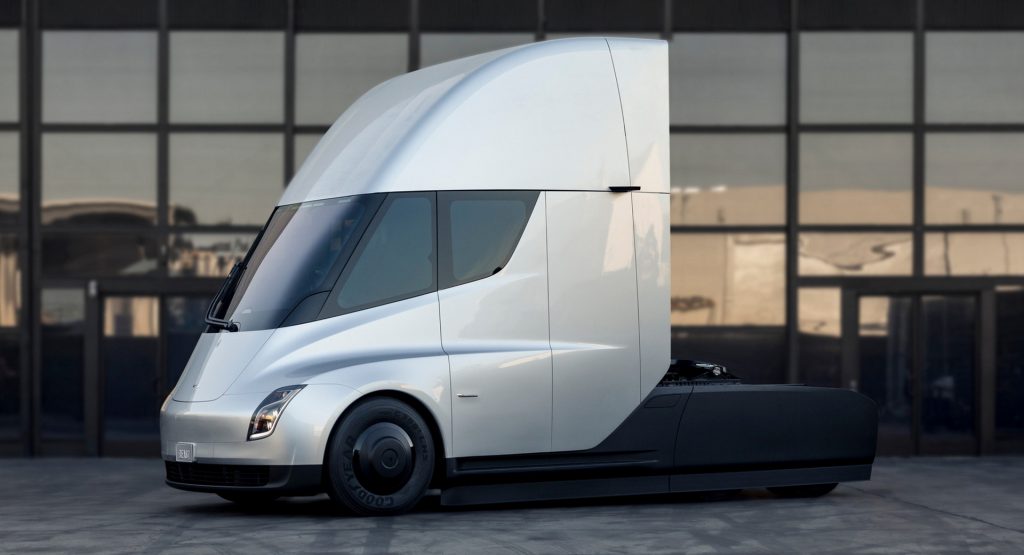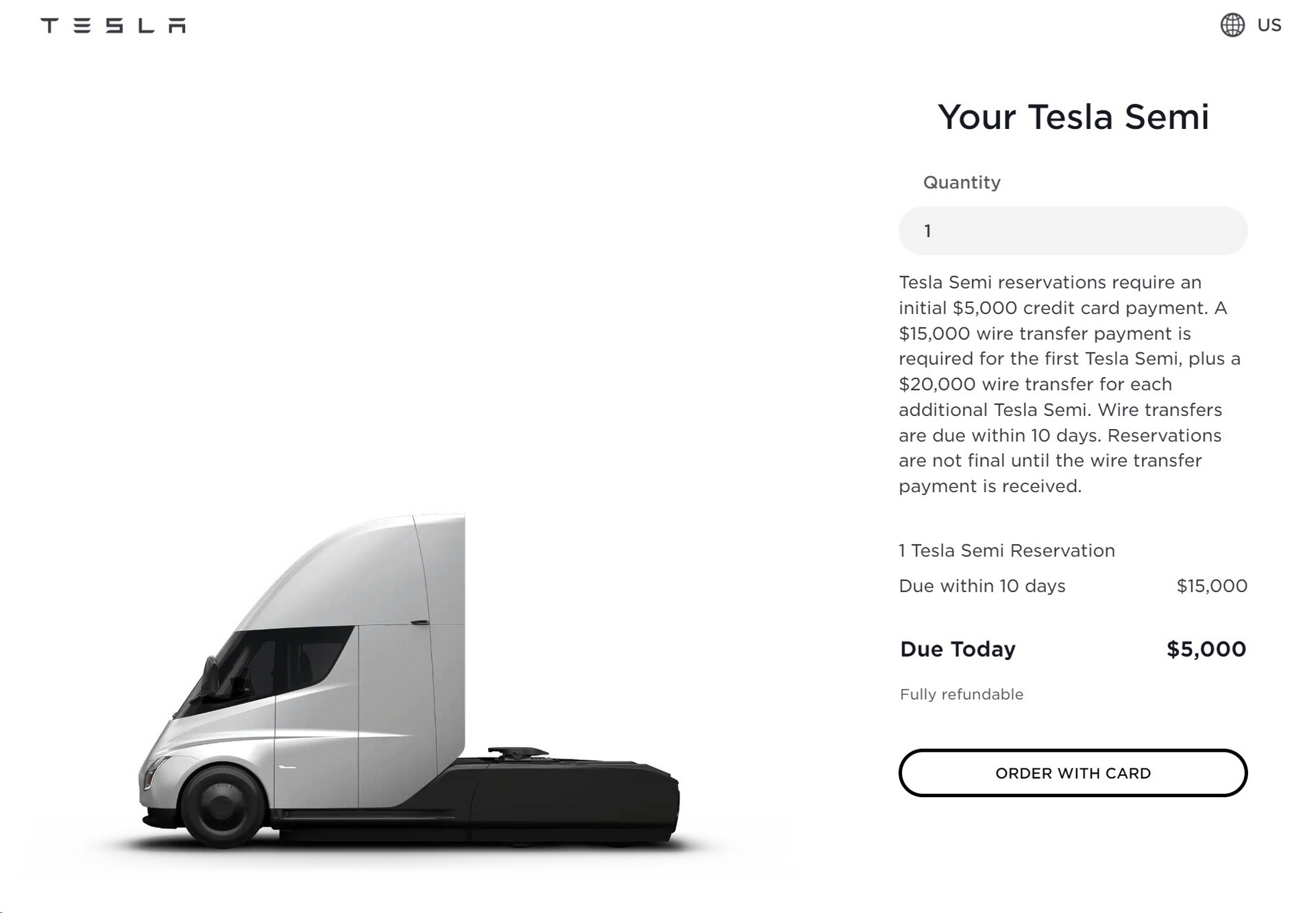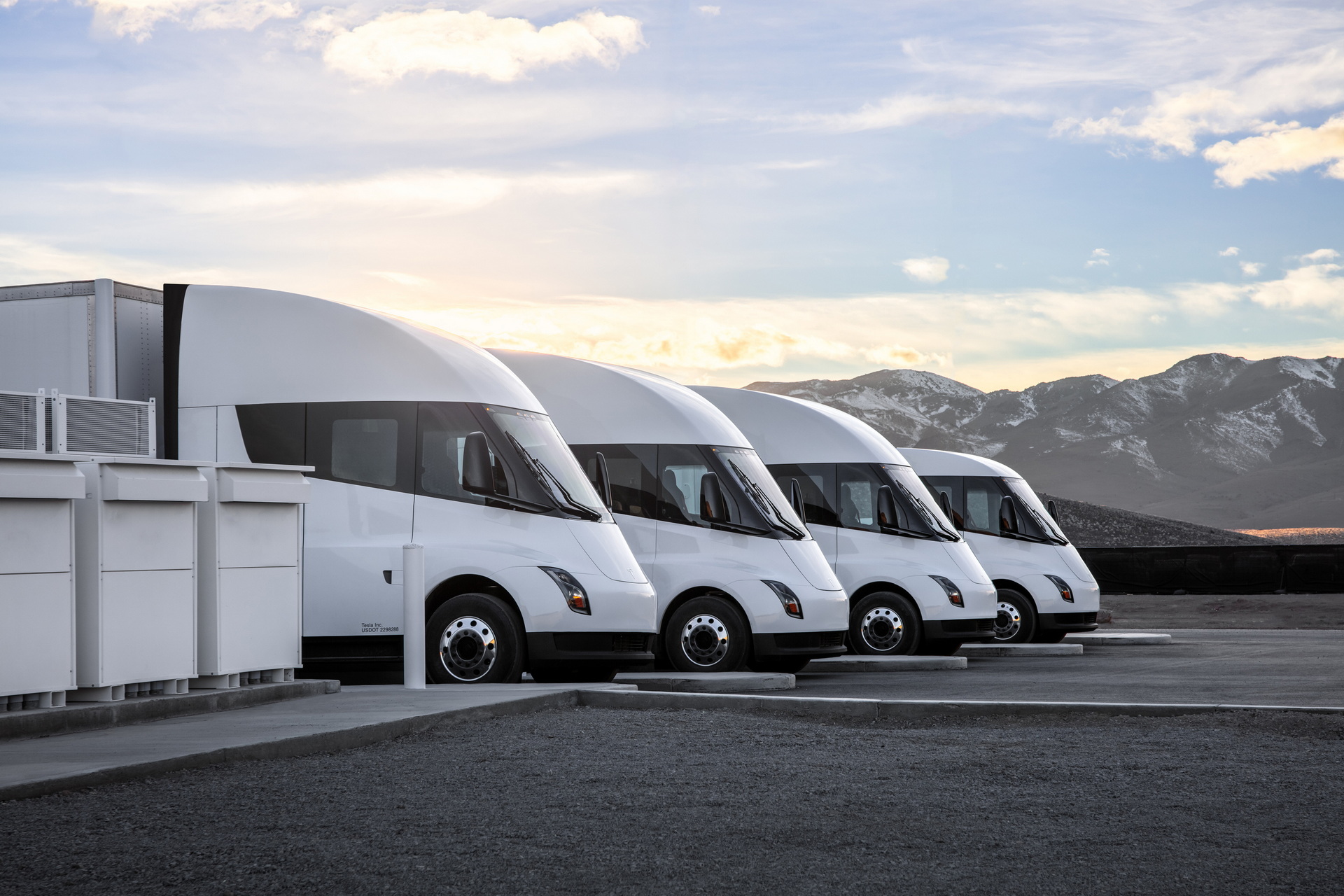Tesla recently updated its reservation page for the all-electric tractor-trailer it first announced in 2017. Prospective customers are now invited to put down a $20,000 deposit for the Semi.
In order to place a reservation, customers will first have to put down $5,000 ($6,000 CAD, €4,000 in the Netherlands, £4,000 in the UK, and 41,000 Norwegian Krowns) with a credit card. They then have 10 days to come up with a wire transfer for the remaining $15,000 ($20,000 CAD, €13,000, £11,000, kr119,000) of their reservation payment. At that time, they can also put down another $20,000 ($26,000 CAD, €17,000, £15,000, kr160,000) for each additional Semi they want to order.
The agreement states that the reservation payment will then be applied to the full purchase price of the Semi, which is expected to start at $150,000. The reservation can be canceled at any time, the company writes, “in which case you will receive a full refund of your Reservation Payment.”
Read Also: Tesla Cybertruck And Semi Could Feature 800-Volt Architectures
That’s all well and good but nowhere on the reservation page, nor in the terms and conditions, is a production timeline laid out. The company gets no more precise than to say that customers have “secured the approximate priority for ordering [their] Tesla Semis.”
That’s a bit of a concern because the story of the truck has been long and winding. Unveiled to wide acclaim in 2017, the automaker promised that it would get between 300 and 500 miles (483-805 km) of range, would be powered by four independent motors, and would be able to hit 60 mph (96 km/h) in 20 seconds.
It also said that the truck would hit the road in 2019, which obviously did not happen, and every year since the company has pushed that estimate back by a year. Tesla is now saying that it will go into production sometime in 2023.
Although it’s updated the production timeline every year since 2019, Tesla hasn’t updated the price of the truck since unveiling it in 2017. During that time, the prices of Tesla’s other vehicles have risen multiple times and hyperinflation along with supply chain issues are causing prices for all-electric vehicles to rise. So, although customers can order the truck, what it will cost when it actually hits the road may be hard to predict.






